The article was first published in onely Planet China magazine, Issue 12/2021.
This English version was translated from the Chinese original with DeepL, with the manual correction of some obvious mistranslations. I apologize for any mistakes made by this AI translation tool.
This is the first part of the article, click here to read the second part.
All good travel, like love, is about stepping out of your usual self and being in the midst of fear and wonder.
–Pick Yell, Why We Travel
In 2020, the National Health Commission has released a life expectancy of 77.3 years per Chinese resident, which means that each person will experience an average of 28,234 24-hour days in their lifetime. Of the more than 10,000 24 hours I have already experienced in my life, yet none, as rich and heart-wrenching as the one that begins at 9 a.m. on Dec. 26, 2020.
9AM: An ordinary morning in Shengping Town
I climbed the winding steps to the small shop by the town’s central square for breakfast. Even if it’s only early morning, the direct sunlight from the plateau is already dazzling, but the chilly winter breeze weaving through the valleys beats against my dry cheeks, sweeping away what little warmth there might be. This is the country town of Deqin in Diqing Prefecture, and the locals are more used to calling it “Shengping Town”. I like this poetic name, which always brings to mind the beautiful image of “singing and dancing”.
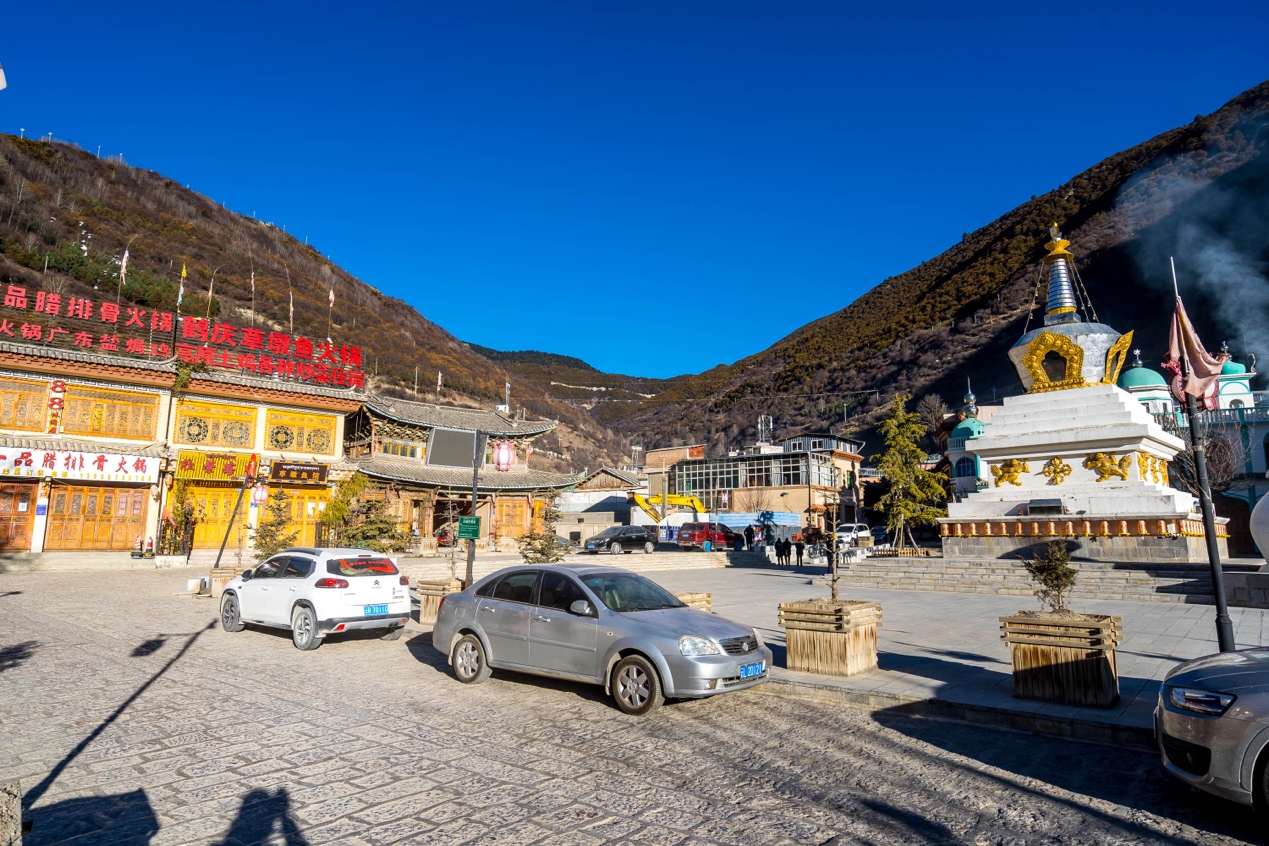
In reality, however, the town of Shengping is just a dull town. If you look down from above, all you can see is modern square box buildings built under the concept of “quick and economical”, haphazardly stacked in the narrow ravine valley left by the melting of the ancient glaciers. The vast majority of tourists come here with the sole purpose of transferring to the Meili Snow Mountain viewing platform at Feilai Temple outside the town. Even the few restaurants in town, most of them are also crowded in and out of town next to the 214 national highway, signage a more prominent than one, are looking forward to a share of the tourism economy from the sacred mountain forever hot. Although the town of Shengping from the Feilai Temple but a dozen kilometers, but three sides surrounded by the lofty mountains, but the tourists are never possible to get a glimpse of the real Kavagbo here.
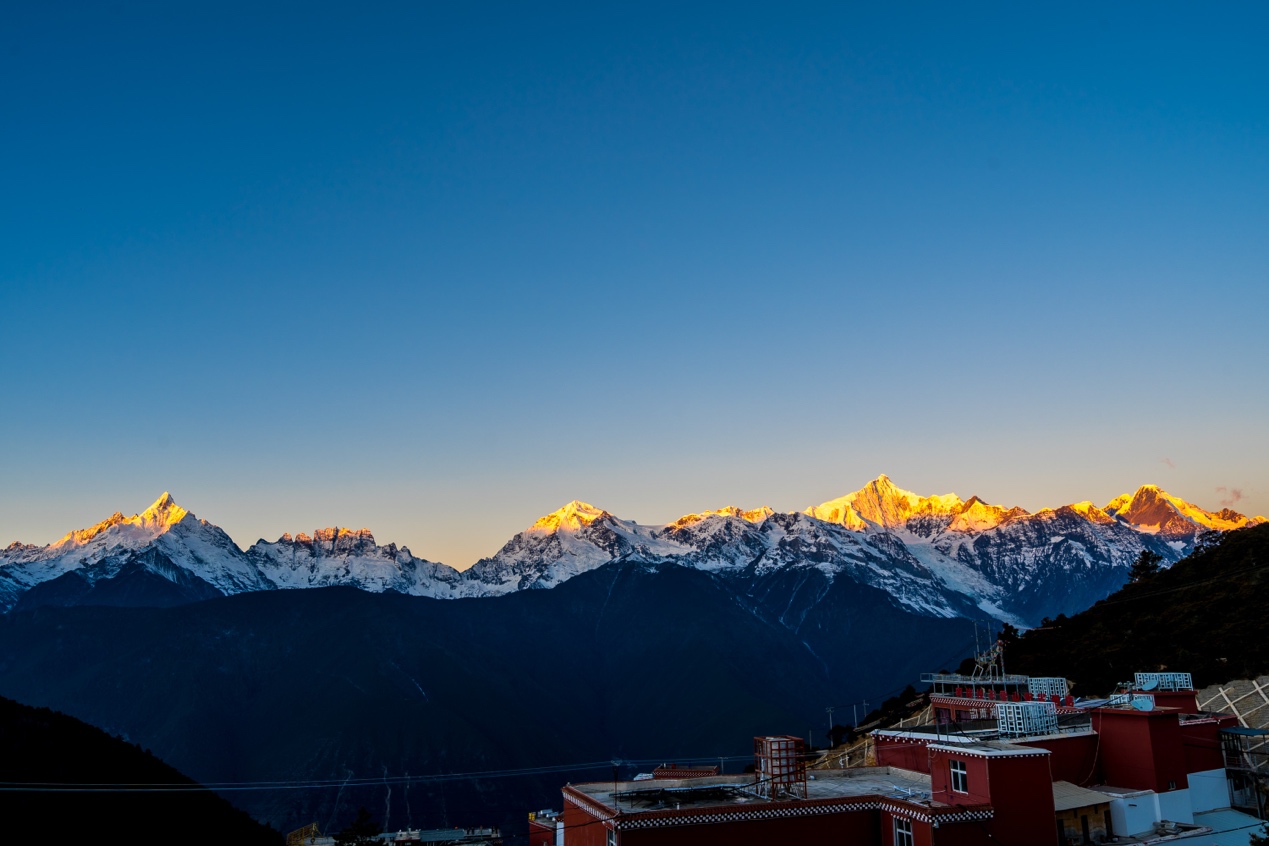
However, when I was in the “no view” town of Shengping, I suddenly felt something different: a town that is bent into a steep valley, with a nearly vertical staircase that connects the wide and narrow streets that look close together on the map, but are actually four or five stories high. It’s like a scene from a “cyberpunk” science fiction game.
The Hengduan Mountain Range in southwest China stretches thousands of kilometers from north to south, and the valley in which Shengping Town is located is just a dull corner of it. The slow drift of the tectonic plates over millions of years has squeezed the hard rock into gullies like the corners of an old man’s eyes. The giant folds between the mountains have given birth to large and small water systems, and the flowing water systems, in turn, have given more life and spirit to the still mountains.

In 2003, the Hengduan Mountains were registered as a World Natural Heritage Site under the name “Three Parallel Rivers”. There are four major rivers in the region actually: The Jinsha (Yangtze) and Lancang(Mekong) are well known, but the Nu and Dulong rivers are not known to most people. However, as they flow southward and cross the border, then become Myanmar’s two mother rivers: the Salween and the Irrawaddy, which have been nourishing the sons and daughters of the tropical plains of the South Central Peninsula for generations.

Four days ago, I set off from Lijiang, wanting to complete a “four rivers in one go” driving trip. The First Bay of the Yangtze is located in the town of Shigu, a whole open valley that has been alluvial over the years, and the blue river flows quietly, cutting a sexy curve in front of my eyes, turning and winding north. Not far down the river, I reached the Tiger Leaping Gorge. The river here, in the gap between the Haba Snow Mountain and the Jade Dragon Snow Mountain, suddenly changed its temperament and became a roaring muddy yellow, like a fierce tiger on the next mountain, rushing through. When we passed Shangri-La, we saw the wide river again, but it was still the Jinsha River, only this time it was the upper part of the “First Bay”. The river is just like the Tiger Leaping Gorge, muddy and fierce, full of the wildness of alpine rivers. It seems that the still water seen at the First Bay is not the true nature of the Jinsha River.

From the riverside town of Benzilan turned westward, into the embrace of the Baima Snow Mountain, only then officially parted ways with the Jinsha River. The newly completed high-grade Yunnan-Tibet Highway (G214), along the tunnel and bridge, the snowy mountain valley has long ceased to be difficult. However, as a tourist, I still prefer the rugged old road with a flat new road all the way around. All passenger and cargo transport have been converted to the new road, the old road only a few scattered like me sightseers.
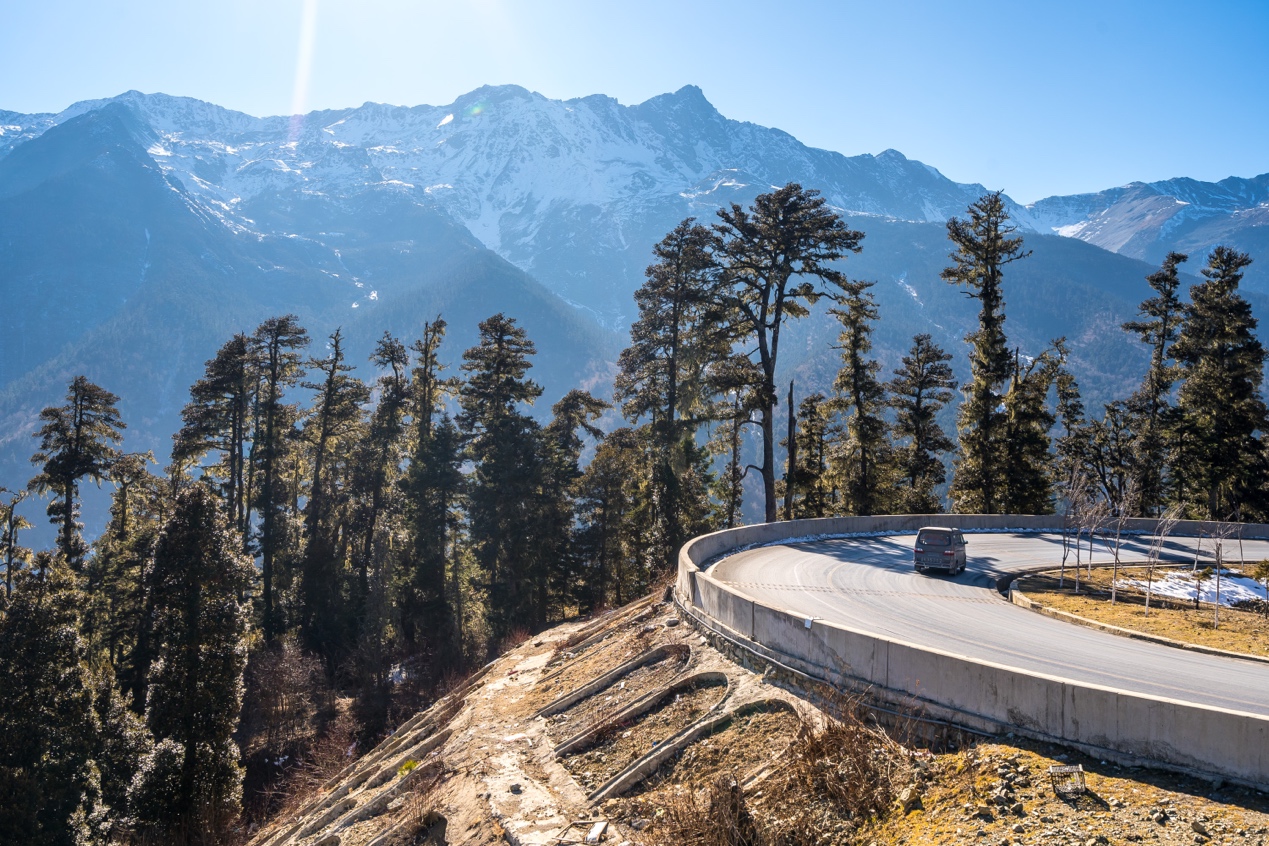
The main peak of Baima Snow Mountain, with an elevation of 5430 meters, does not stand out in the Hengduan Mountains, which are full of peaks above 6,000 meters. Especially standing at 4292 meters above sea level, the pass overlooking the distance, the height difference is only a thousand meters. However, as the first snow peak in this trip to feel close, plus is standing in the shadow of the Mani pile and fluttering Tibetan sutra all the way, or let people inevitably awe of the mountain. And when over the White Horse Snow Mountain, into the jurisdiction of Deqin County, will be officially to the boundary of the Lancang River.
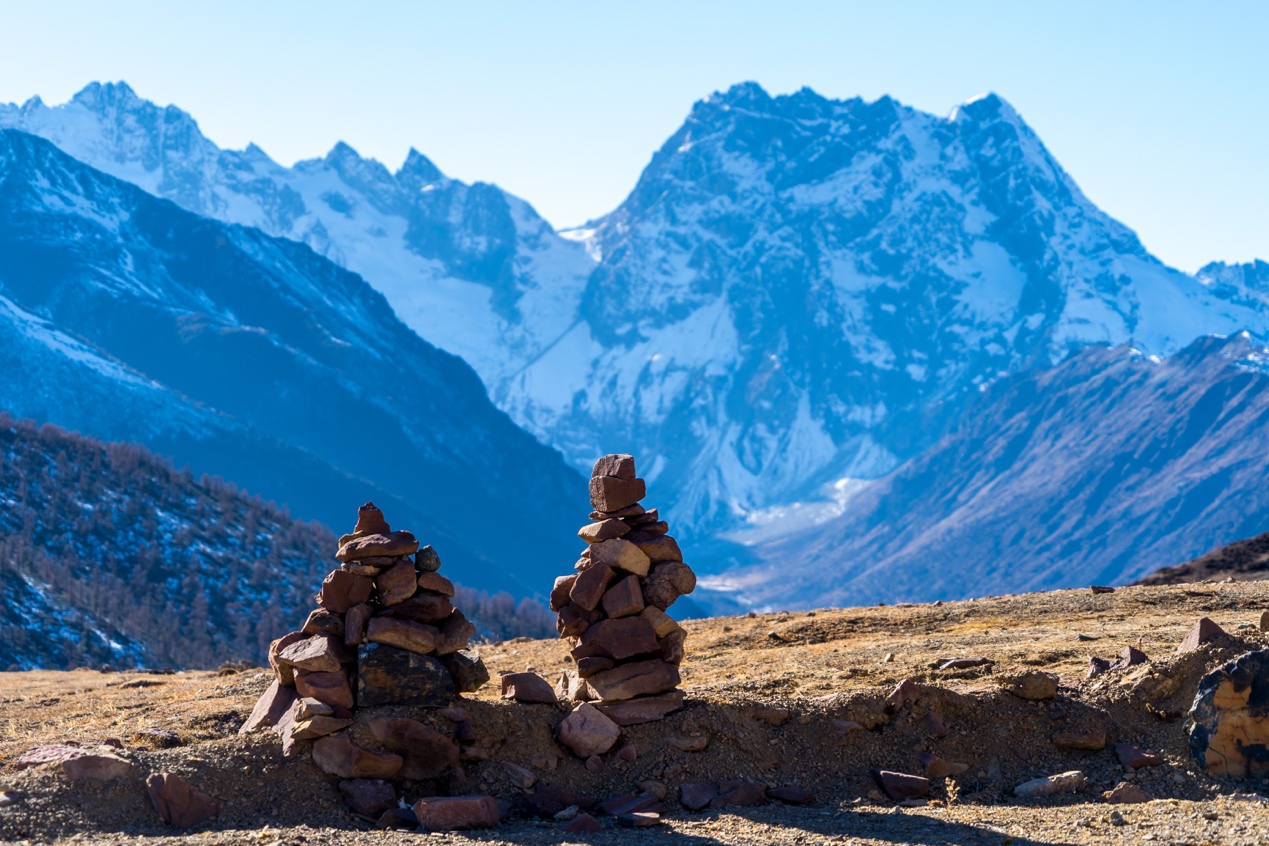
When I first arrived in Shengping town three days ago, I didn’t plan to stop here. After a quick photo shoot of the “Sunrise from Golden Mountain” at Feilai Temple, like most tourists, I continued my journey north, following the Yunnan-Tibet Highway to the other side of the provincial border to Yanjing, Tibet. If it wasn’t for a chance encounter there, I would have passed through here on my way back and gone straight to the next destination of my journey. I’m glad I didn’t passed by this interesting town.
Perhaps it is too early, the small square is empty, the golden spire of the Lama Tower and the green dome of the mosque stand shoulder to shoulder in the sunlight, aside from the antique gatehouse that leads to the “old town of Adunzi”.

Adunzi is a place name much older than Shengping Town. In the era when it was called Adunzi, this ravine used to be an important trading post on the ancient tea horse road. However, the “ancient city of Adunzi”, like many other “ancient cities” in China, has only a signboard that reads “Develop Tourism, Achieve Poverty Alleviation and Enrichment”, and a number of buildings that are under construction.
To the left of the gatehouse, the small door of the room that looked like it was set aside for the ticket office was open, and the lack of any sign, except for the large steamer that was wafting out a hot aroma, assured me that this was the bakery I was looking for. Inside, I sat down at the only low table, where a middle-aged, dark-skinned man was wrapping the buns, his wife was mixing the filling, and a Buddha statue was hanging on the wall.
“Tourists huh?” The man’s accent was that of a local Tibetan with a rusty Yunnanese Mandarin, and he wiped his flour-stained hands on his apron before serving up the buns.
“Yeah! Just arrived yesterday. A friend said you guys are ‘the best buns in town’.” I responded with a smile.
After trying one of each of the meat and vegetarian fillings, I could see why my friend recommended this place. The buns looked small but tasted substantial, and two or three were enough for a breakfast.
I asked the men why they didn’t get a sign. The small square is next to the national highway, an essential route for vehicles traveling to and from Meili Snow Mountain and in and out of Tibet. The couple has a skill that has made their acquaintances praise them, yet countless potential new customers have never had the chance to discover them.
“You mean get a sign?” The look on his face made me feel as if he had never considered that option before. “If the buns are good, customers will naturally come …… You mean attract more people? Money, well, how much is too much?” “You mean get a sign?” The look on his face made me feel as if he had never considered that option before. “If the buns are good, customers will naturally come …… You mean attract more people? Money, well, how much is too much?”
I understand what he means, but it’s still hard to understand why he’s not making the money that’s “right in front of him”.
It wasn’t until I scanned the checkout that I saw his WeChat name was actually a somewhat literary and somewhat intriguing word: Initial Dream.
What is the “original dream” of this ordinary couple who quietly run a bun shop without a sign in Shengping Town?
Is it this peaceful life now, or the WeChat avatar he’s using, the cute little girl in Tibetan dress?
10AM: Deqin Special Collections, the Forgotten “Loser” of the Past
Ari, a girl traveling alone, and Mr. Qi Wenhui, who recommended the bakery to me, were the two people I met by chance in Yanjing. At the time, Ari, a Catholic, was on pilgrimage to the church there, while Mr. Qi, a scholar temporarily living in Deqin, was conducting his research. When we first met, Mr. Qi wore a black woolen hat and a pair of heavy glasses, a student’s outfit that for a moment made me think he was my age. I was surprised to learn later that he was nearly 20 years older than me and had spent many years in France as an academic researcher.
He invited us both to visit an exhibition in the Dechen Library, his latest research, and that was the reason for my stop back in Assumption. It was a Saturday, and most of the librarians were not at work, except for the reading room, which was open as usual. Mr. Qi opened the heavy security door of the office area with a borrowed key, and inside was a dimly lit corridor with the smell of old damp and books, just like the office area of any rural library should be.
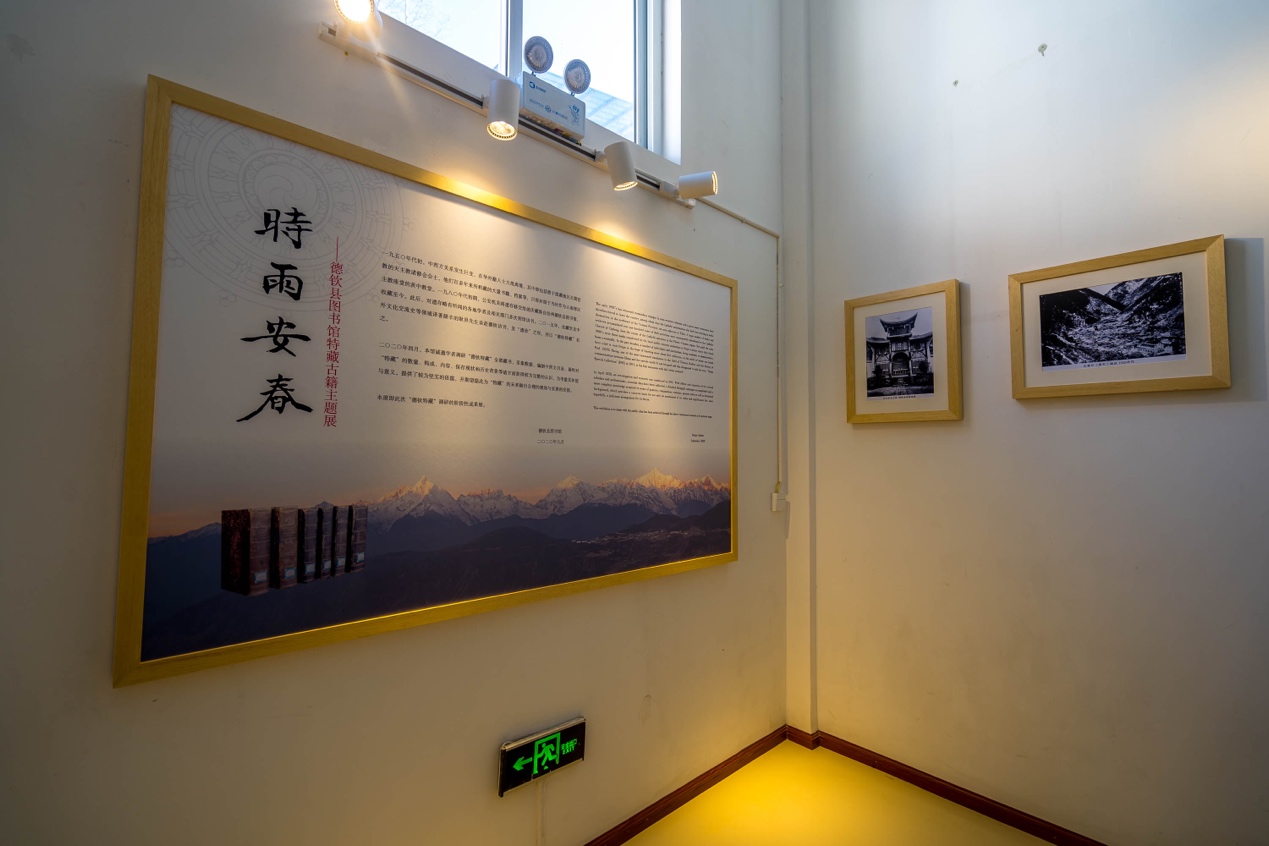
He guided us up to the second floor, pushed open one of the doors and reached out to turn on the lights in the room. The room was decorated in a combination of East and West, with bright but soft lighting, and everything was arranged just right. The walls are lined with illustrated panels, the glass cabinets are immaculate, and the books are displayed in them, with a high stool for sitting and reading. To me, the room seemed strangely out of place, not in this remote mountain county, but in the newly opened galleries of the Louvre.

The design of the exhibition hall, and even the research results displayed therein, were almost all completed in less than six months under the auspices of Mr. Qi. I once asked him specifically if he had specifically studied museum-related knowledge. He denied my suspicions, saying that he had only visited museums of all sizes in the city when he was studying art history in Paris, taking the opportunity to see the exhibition.

The subject of the exhibition is the 775 special-collect of books in the Deqin Library. Today, most of these books, except for the few in the display case, are housed in a constant temperature and humidity shelf next door. Visitors can get a glimpse of the books through the glass wall deliberately set up between the two rooms.

In the early 1950s, due to the change in relations between China and the West, a large number of foreigners left China, and the foreign clergy left one after another, either actively or passively, including the French Catholic missionaries who had been missionaries in the Tibetan side for a long time. In 1983, the public security authorities handed over these relics to the Deqen County Library, where they have been kept ever since.
Mr. Qi, who had been a long-time interpreter between China and France, was briefly idle due to the epidemic in early 2020 and the subsequent interruption of exchanges between China and abroad. He was introduced to the collection by a friend. The Deqen Library wanted someone to dig into the stories behind the collection, and he was the perfect person to do so, being fluent in French and having studied art history in France for many years, even taking a year’s course in European classical bookbinding and restoration. Throughout his research, he did all the work as a volunteer, pro bono.
In addition to classifying the voluminous but weathered books and checking the gaps, Mr. Qi has also brought his expertise to bear on the books’ bindings, making a fascinating analysis and presentation; and systematically sorting out and examining the images and texts in the books of missionaries recording China a century ago.
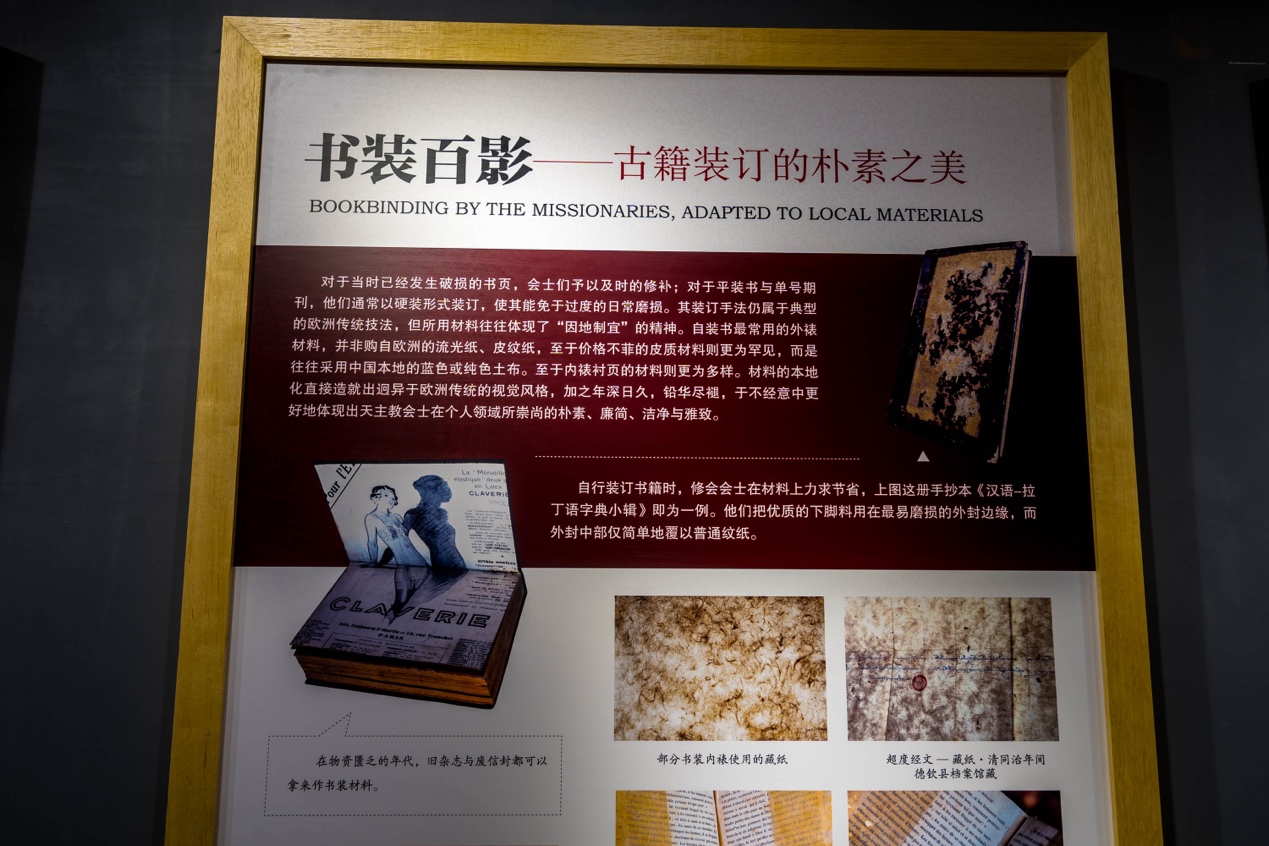
The long years of travel in France seem to have given him a certain unique French romance. On the bookshelf behind the glass wall, a carefully framed specimen of a plant stands out. Mr. Qi said that he found it by accident in his book collection, and that some missionary must have picked it and stuck it in. In order to properly preserve this century-old plant, he even sought out someone to learn the art of specimen making.
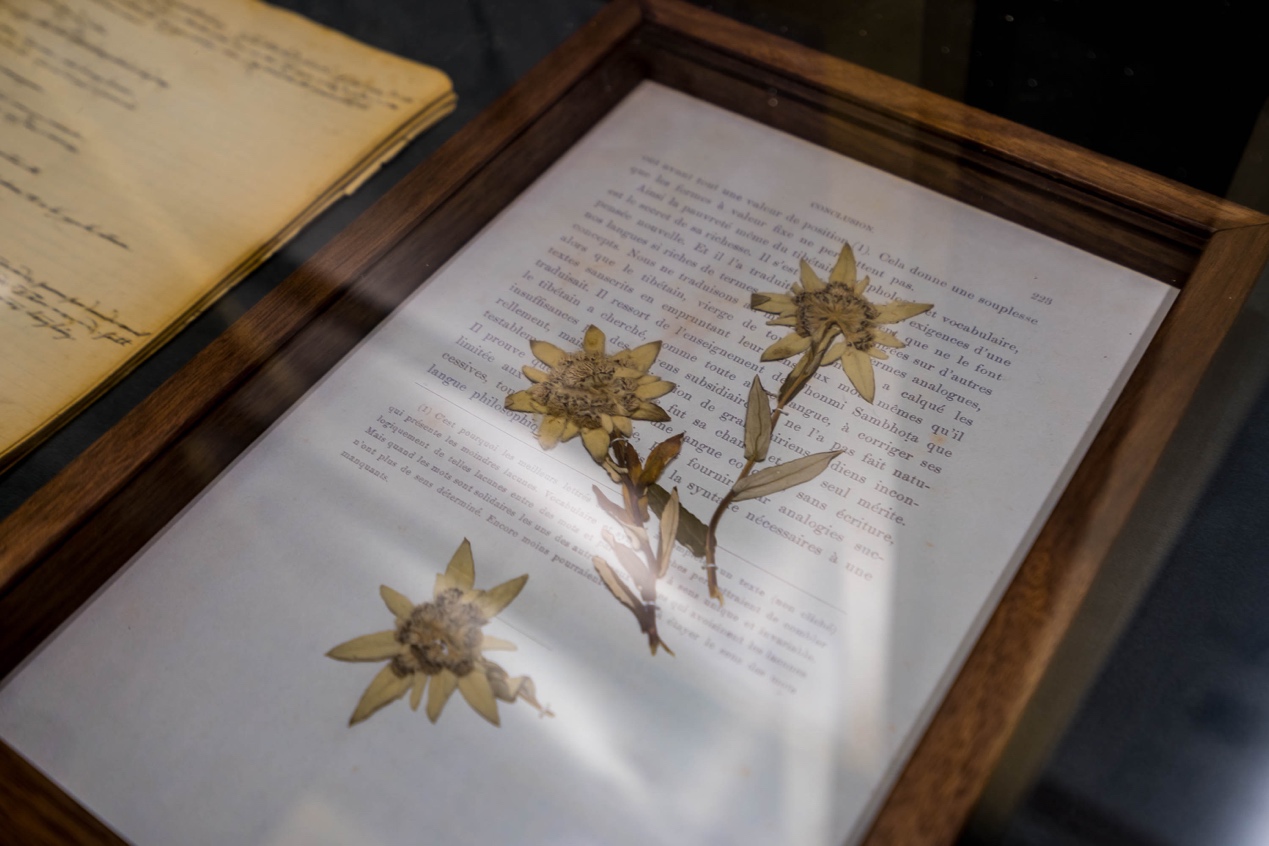
After seeing the exhibition, I still couldn’t get enough of it, “Then let’s go back to the Tchung church.” Mr. Qi said, “That is where this collection was once kept and is the best preserved church in Dechen today.”
Driving from Shengping town to the mouth of the Lancang River and then 50 kilometers south along the riverside road, when you look across the wide, calm blue river, you see the unassuming Chinese spire emerging from the lined-up buildings on the other side of the river, and that’s where the church is located. A photo of Tshizhong taken in 2015 is included in the “Deqin Special Collection” exhibition, when the church was still the only prominent building in the village, with golden rice fields in front of it and lush green peaks behind it. The church has stood here for more than a century, but in just five years, everything around it has changed.
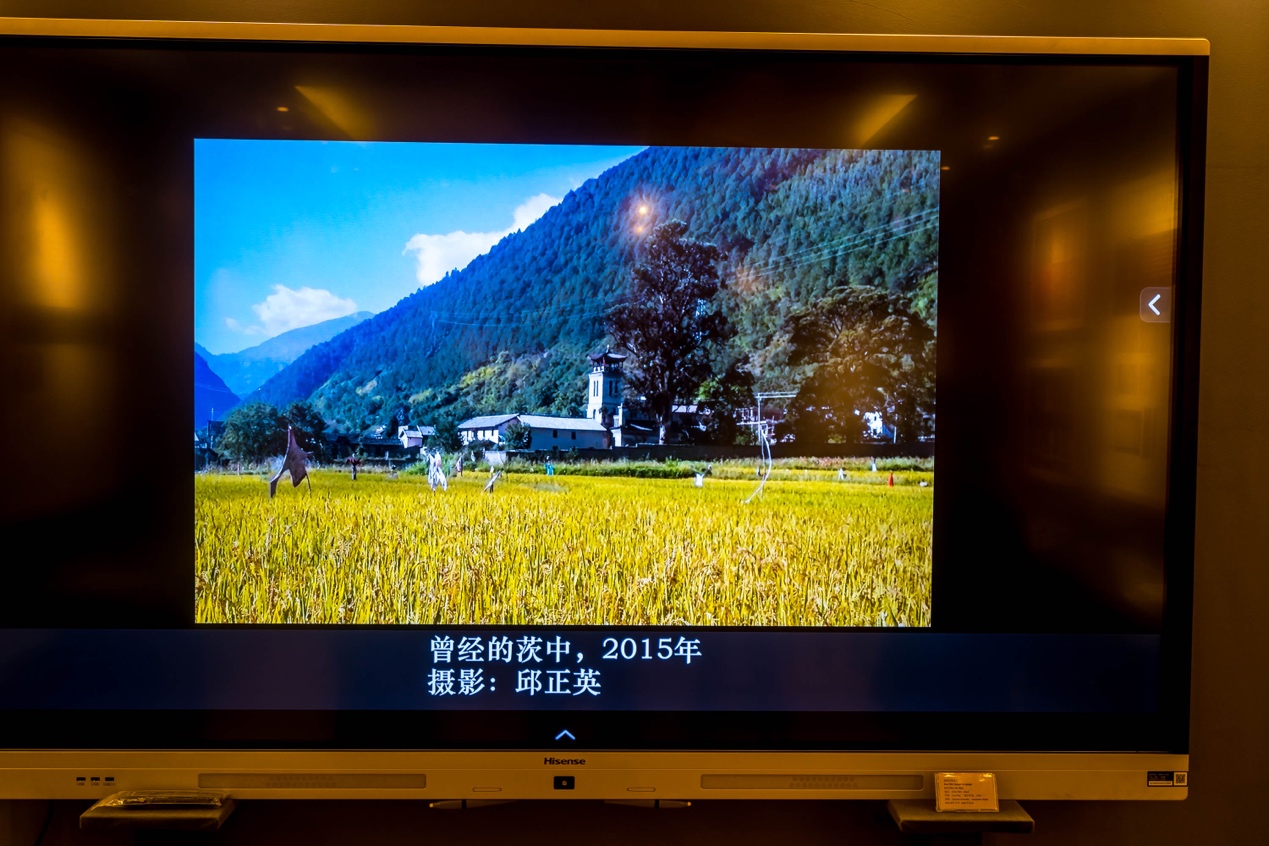

Driving across the Lancang River bridge into the village, the intricate alleyways look like a maze, and I stop in front of a three-story building under construction to ask for directions, where a man covered in plaster is working on scaffolding. I noticed that he had a rosary wrapped around his hand and was clearly a Buddhist, but it didn’t deter him at all from patiently pointing me in the direction of the church.
The first Catholic church was built in 1866 by missionaries from the Paris Foreign Mission in the village of Tshigun, south of Tshizhong, on the edge of the Tibetan Plateau, where Tibetan Buddhism has always been widely spread. It was not until 1905 that the church was burned down by the angry “anti-Foreignist movement”. Similar “church cases” happened all over China in those years, and the incompetent Qing government always had to make reparations and settle the matter. So two years later, the French, who had received the reparation money and were eager to make a comeback, started to build the church in Tizhong Village as the new cathedral of the Yunnan Province.
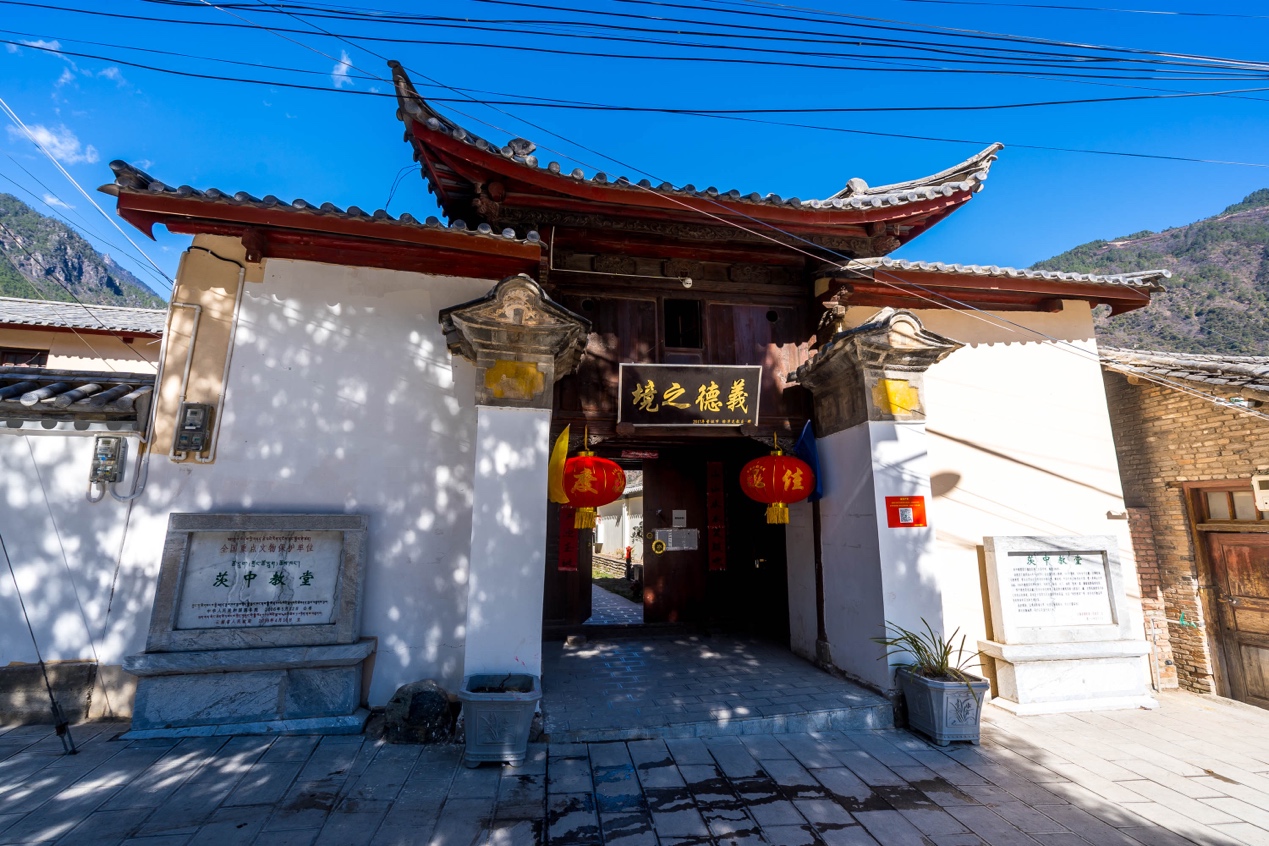
The main church, the Basilica, is a Basilica-style masonry building with a plan that often represents majesty and orthodoxy, dating back to the public synagogues of Roman times. The semi-circular arched windows and doors lining the walls are a central feature of European medieval Romanesque architecture. The wooden bell pavilion at the top of the tower, with its flying eaves and pointed roof, is perhaps the greatest innovation made by the missionaries to show that they were trying their best to integrate into Chinese culture.

The construction of the Hall took four years, with a large number of building materials brought in from overseas by water or horse and buggy, and was not completed until 1911, just before the fall of the Qing court. It took them another ten years to build the local Yunnan-style annexes that surround the church. After the expulsion of the missionaries, the church was used as a primary school for a long time and was fortunate to escape the “10-year catastrophe”. Although the church has been restored several times, it still retains almost all the charm of the original building.
Yao, the church’s priest, is currently the only clergyman in the four or five Catholic churches around Deqin. He had gone to another church to celebrate Christmas Mass the day before and had not yet returned, so he asked the sister to receive us. When we arrived at the church, the nun had a temporary commitment and left after a brief exchange of pleasantries. Thus, she left a whole empty church to the two of us.
The Great Scripture Hall was locked, and I peered through the doorway to see the structure of the interior: two rows of square pillars divided the interior space into a nave and two side aisles, and at the end of the nave was an altar filled with flowers, all of which are classic Catholic church rules. However, if you look deeper into the details, you will find Chinese characteristics everywhere – for example, a couplet hanging on both sides of the altar: “Without beginning and without end, the first is the true master of form and sound; proclaiming benevolence and righteousness, I show the great power and balance of rescue.” This is an inscription left by the Emperor Kangxi of Qing Dynasty when he visited the church in Xishiku, Beijing.
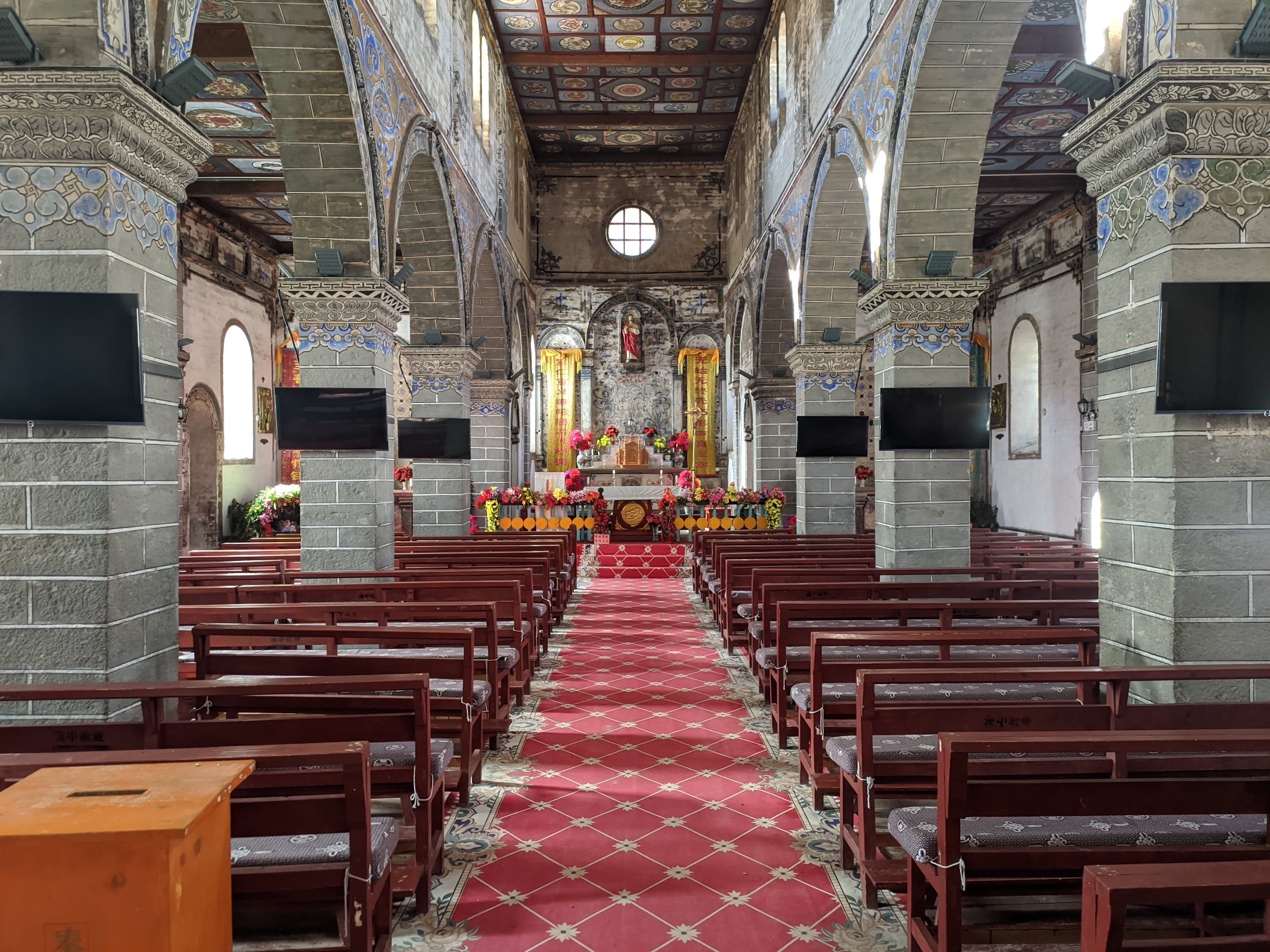
The choice of this couplet in the church is perhaps an intentional attempt to blend the foreign Catholic religion with the familiar Chinese culture of the locals – as in the case of the Jesus in the centre of the altar, who is standing straight on the Lotus Throne, surrounded by auspicious clouds, with his hands in the Seal of Fearlessness common to Buddhist statues.
I was almost amused by this East meets West mash-up, but soon realized the missionary’s wisdom and pragmatism: to the Tibetans, who have lived in the mountains for generations and have been imbued with Buddhism for too long, the kind-eyed Jesus on the lotus throne is obviously more acceptable than the crucified Jesus in the Western church with a grim face atoning for the sins of the world. It is easier to accept.
Despite their efforts to integrate into the local culture, the French, bent on opening up the frontiers of their faith, met their “Waterloo” at the roof of the world. According to the Qing “Archives of Ecclesiastical Affairs”, in 1861, as soon as the Treaty of Beijing was signed, which allowed missionaries to enter the country, the Catholic Church made a list of seven people from the “Tibetan Diocese” and requested to enter Tibet as missionaries. The Church had been so proud to plant the cross in Lhasa, the “Rome of the East” in their hearts, but due to the strong opposition of the Tibetan monks and people, they were soon defeated and retreated from Chamdo to Dechen in northwest Yunnan via Batang and Yanjing. The archives record the miserable situation of the missionaries after they arrived in Deqin: “For more than ten years, a church was set up in Adunzi, but no inhabitants followed it. The only people who waited around for the service were a few Sichuanese.”
It was not until the early 20th century that the situation of the missionaries improved somewhat. Due to the mediocre government of the late Qing Dynasty and the subsequent wars during the Republic of China, public services that should have been provided by the government in remote mountainous areas were long absent, and the Church, with Western financial support, was able to replace the government’s corresponding functions to some extent. In contrast to the backward practices of Tibetan Buddhism, which served the serfdom, Catholicism, which experienced the Western Renaissance and Industrial Revolution, did bring some relatively progressive ideas to the local people.
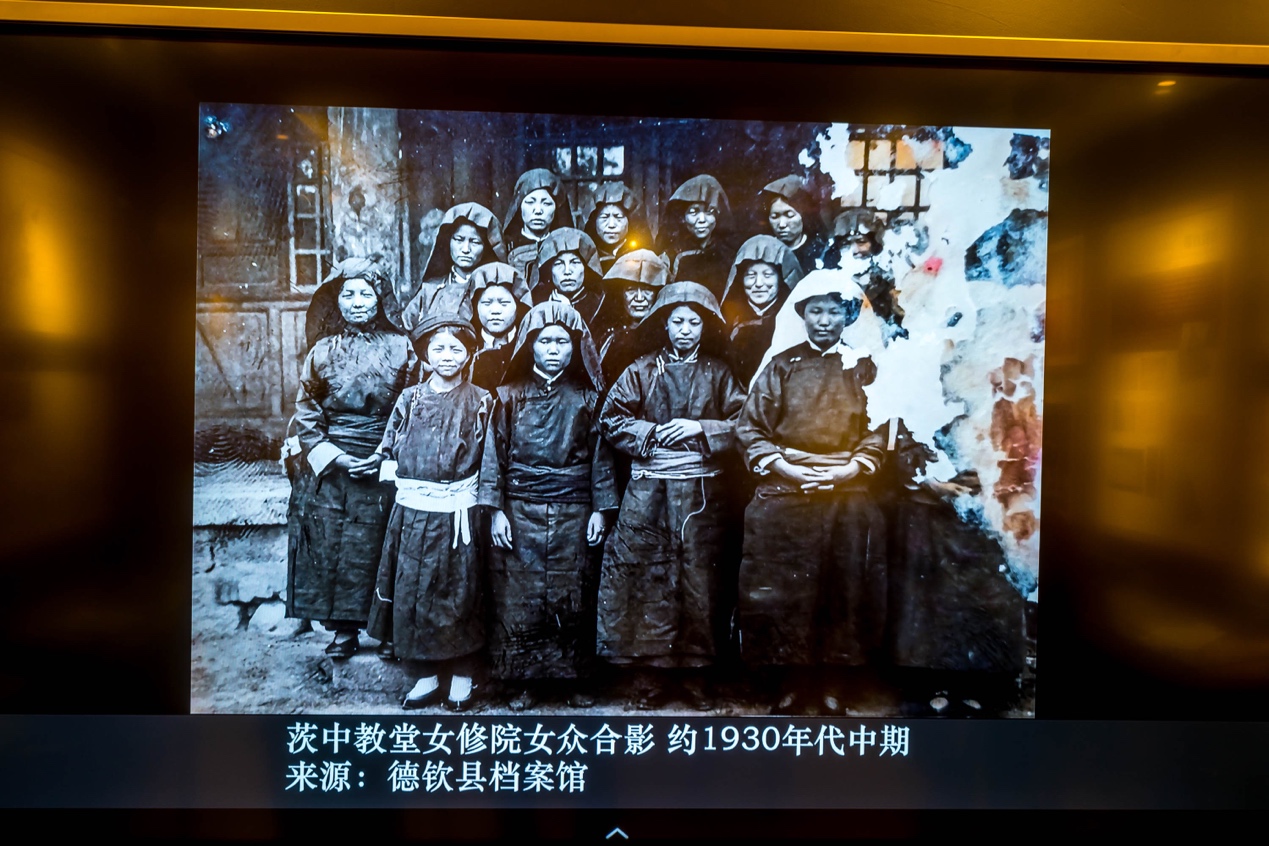
The Deqin Special Collection Exhibition includes a number of Western medical books brought by the missionaries, who often offer free medical treatment to attract people to the religion. In addition, they opened schools in the churches to teach Tibetan and Chinese to school-age children. Perhaps the mass dispatch of missionaries abroad was itself an important part of the Western cultural colonization strategy, but it is undeniable that some of the missionaries did come with personal ideals and contributed to the development of the mountainous areas of northwest Yunnan, which the Chinese government had no time for at the time.
Even so, however, Catholic influence on the Tibetan plateau has always been extremely limited. Even at its peak in the 1930s, the number of Catholics in the three counties of north-west Yunnan (Deqin, Weixi and Gongshan) was estimated at just over 1,000, not to mention the Tibetan hinterland, where missionaries have always been hard to reach.
French priest Gou Chonin, who has been a missionary in China for 45 years and served as a priest in the Yunnan deanery, has compiled his experiences in China in a book entitled “Thirty Years on the Tibetan Border”. Mr. Qi explained that the original French text of the book’s title, “Trente ans aux portes du Tibet interdit”, really means “Thirty years outside the forbidden gates of Tibet”, which shows the author’s inner frustration.
But the French missionaries brought with them a custom that has indeed been successfully preserved to this day – the making of wine. Two small vineyards remain in the church yard in Tshinaka to this day, the more remote of which is the same age as the church and has been cultivating grapes for a hundred years.
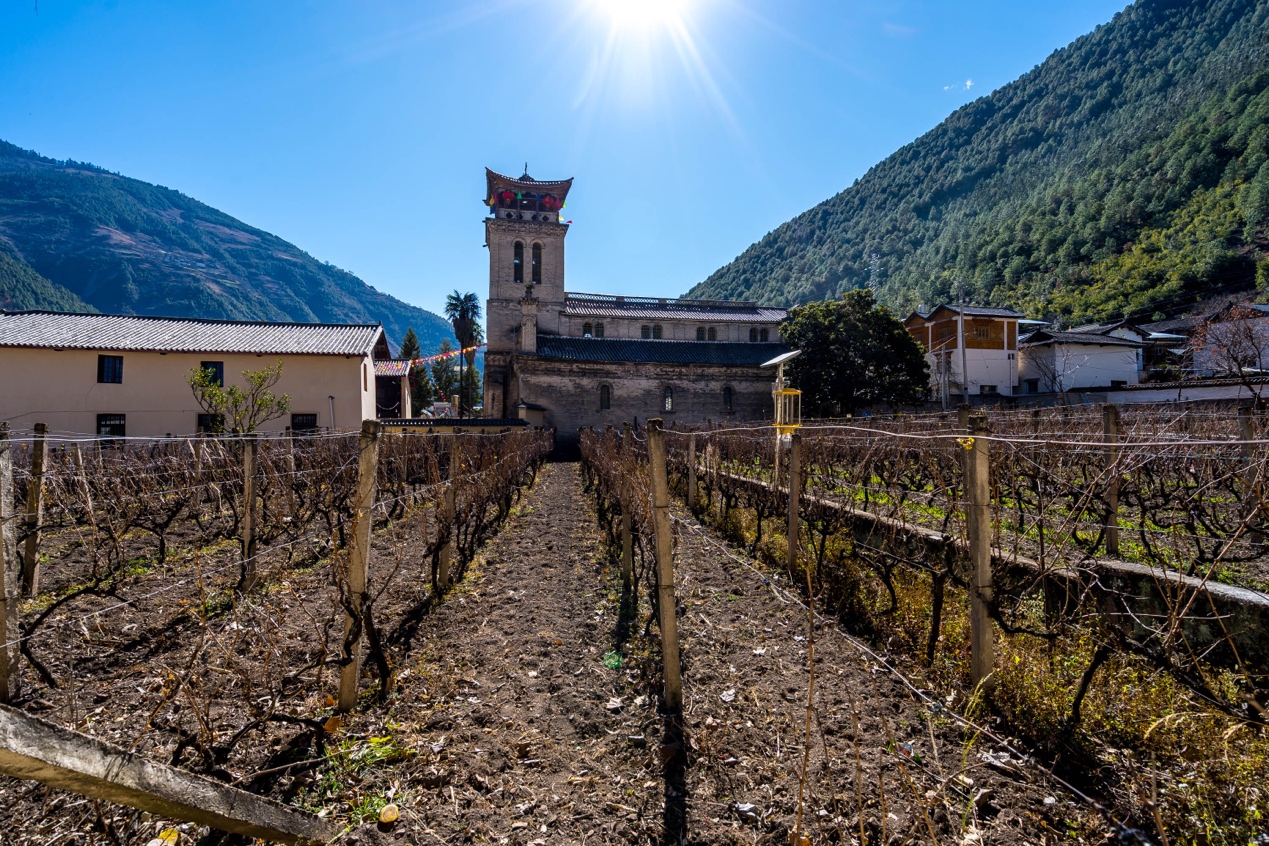
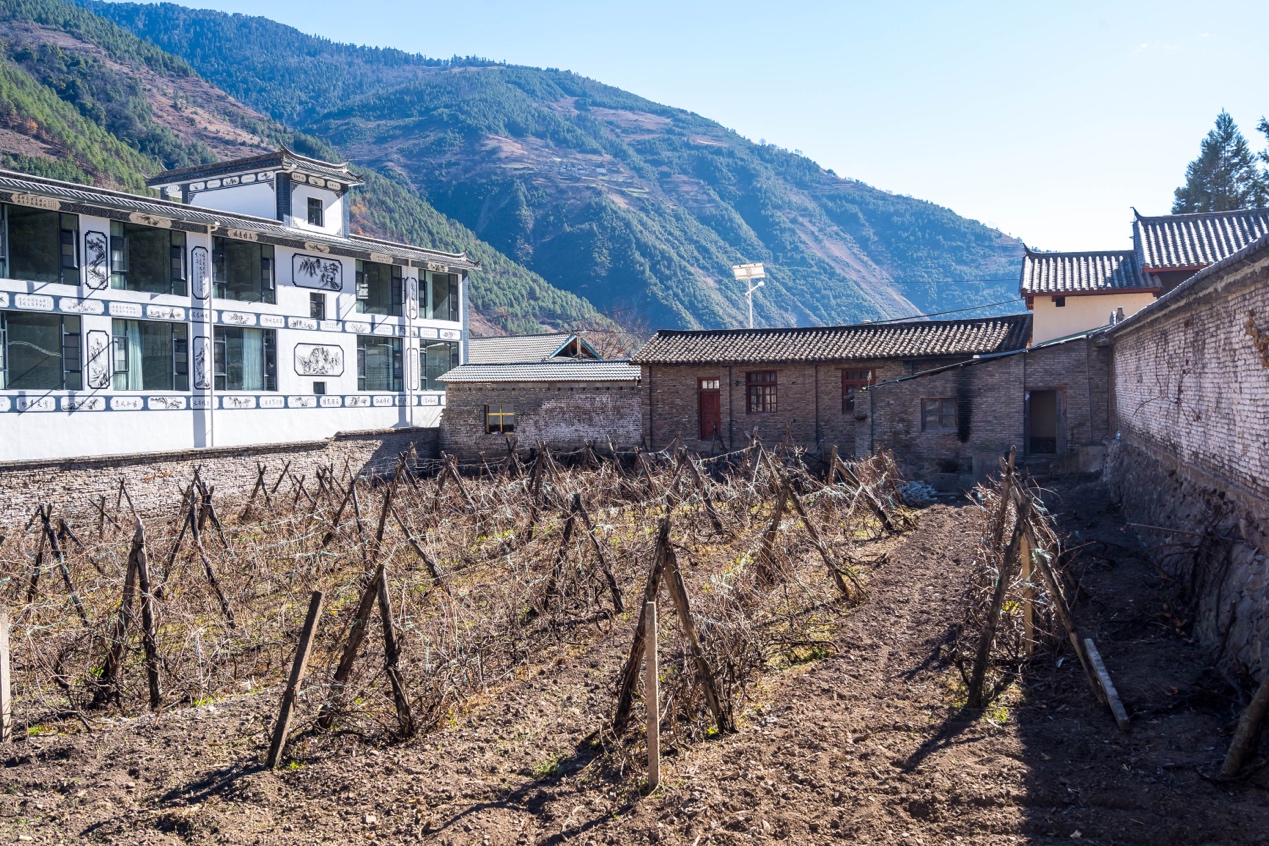
As early as 1933, the British writer James Hilton, in his novel “The Vanishing Horizon” (the name “Shangri-La”, originally from a fictional village in this book), mentioned the wine of the Yunnan-Tibet border mountains, saying that this “wine from the pockets of the Tibetans “The wine “tastes as wonderful as a good dry white from the Rhineland of Germany”.
In fact, James Hilton has never been to China, let alone the remote mountains of the Yunnan-Tibet border. Yet the fact that he was able to give such an accurate description of the wines here certainly shows the breadth of his former influence.
Today, there are clearly people trying hard to revive that influence. Even my small circle of friends has micro-businesses going out of their way to promote the wines of Tzatzin, although I don’t think the ingredients for a product so widely marketed would all come from the tiny vineyard in front of me.
I didn’t get to try the local wine in Zizhong because of the drive, but it reminded me of the salt wells in Tibet that I had visited the day before. The Catholic church there also originated from French missionaries and the same local company was making wine. The name and head of the French priest who is said to have “passed on the seeds and the full range of winemaking skills” are emblazoned on the exquisite bottles, which seem to be full of a sense of mission to “remember the source. But Mr. Qi later whispered to me that they hadn’t even gotten the missionary’s name right.
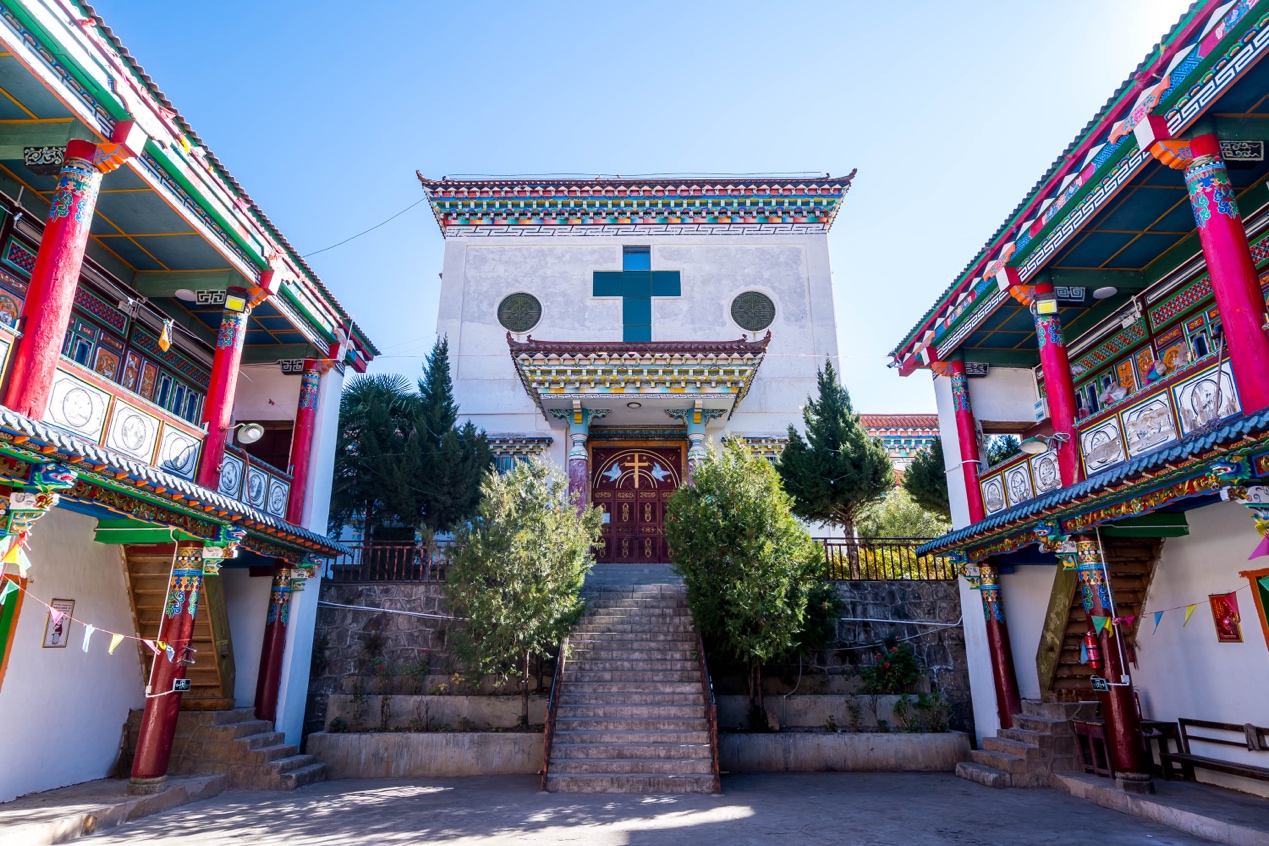
The head of that company, who is also the director of Yanjing Church, is highly respected and has devoted many years to promoting the local culture deep in the mountains. To say that he does wine perfunctorily would undoubtedly be to wrong good people, but serious historical research is indeed not enough to rely on the enthusiasm of a local.
For example, the church I am in, which is listed as a “National Key Cultural Relics Protection Unit”, is listed as “originally built in 1867” on the introduction sign erected by the Deqin County Government. But according to Mr. Qi, the church built in “1867” should be the one in Zigu, and the exact year should be 1866. The actual date of construction of the church in Tshu is stated on the Internet as 1909 and 1911, but the year Mr. Qi finally verified is 1907.
No one here seems to think to care about these seemingly meaningless, boring numbers, and almost no one cares about the hurried past that has long since passed with the wind. But they are, in fact, the blood and flesh that make up real history.
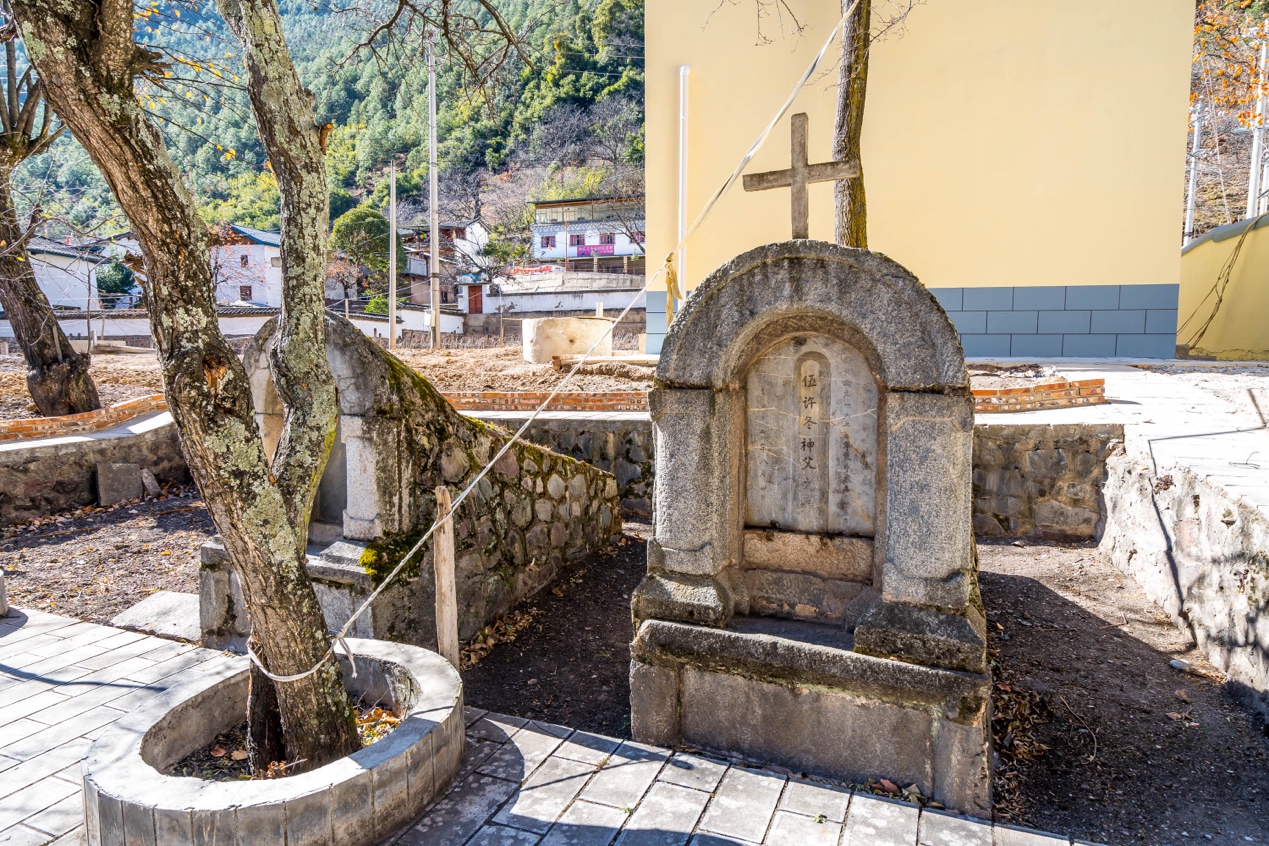
When we were ready to leave, we found ourselves accidentally locked in the courtyard – the nuns had probably forgotten we were still in the church when they left and had locked the gate by hand. The courtyard wall is actually a “Chinese element”, as most churches in the West do not have walls. Eastern cultures are indeed more introverted, sometimes even “self-enclosed”, than the Western expansion and conquest that has long been promoted.
While waiting for the nuns to open the door, I suddenly felt the bitterness of the missionaries who had been locked in their own little world: outside the walls was the hot world, but inside the walls was the empty church. Although they were not really locked in the church, the “lock” in their hearts kept most of the local residents separated from them in two worlds forever – perhaps that’s why Mr. Qi called them “losers Perhaps that’s why Mr. Zee calls them “losers”.
But why should he, himself, be so obsessed with studying the remains of this group of losers?
In response to my question, Mr. Qi later sent me a large paragraph explaining in detail why he had come here to devote himself to this “study of losers” that was not destined to make much of a splash. The last sentence is still fresh in my mind.
“For a normal human society, for a sustainable human ecology, the only law that walks the jungle should not be ‘success and defeat’. Not all hegemony is worthy of the glory of the temple, and not all defeats are worthless in memorial.”
This is the first part of the article. Click here to continue reading the second part .

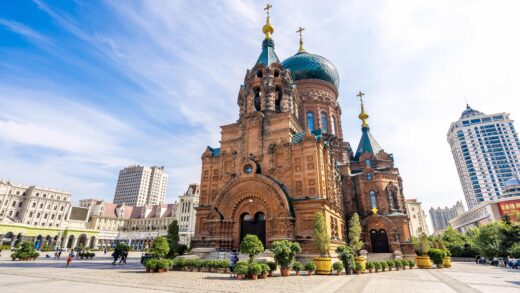

1 Response
[…] is the second part of the article. Click here to read the first […]